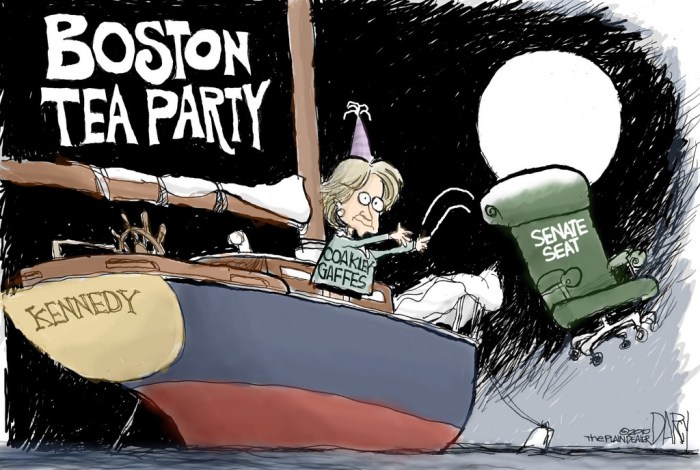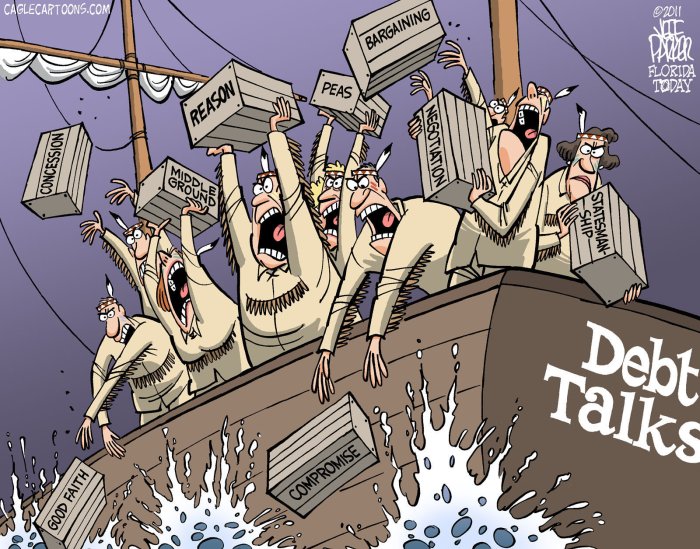Political cartoons about the Boston Tea Party offer a captivating lens through which to examine the historical event and its enduring impact. These visual representations, rife with symbolism and satire, provide valuable insights into the perspectives and biases of the time, shaping our understanding of the protest and its significance.
Delving into the imagery and themes explored in these cartoons, we uncover the artists’ messages and interpretations, revealing the complexities of the event and its lasting legacy.
Historical Context: Political Cartoons About The Boston Tea Party

The Boston Tea Party was a pivotal event in the American Revolution, marking a significant escalation in tensions between the British Crown and the American colonies. It occurred on December 16, 1773, when a group of colonists disguised as Mohawk Indians boarded three British ships in Boston Harbor and dumped 342 chests of tea into the water in protest against British taxation and trade policies.
Visual Representations
Political cartoons depicting the Boston Tea Party often employ symbolic imagery and satire to convey the perspectives and biases of the time. The British are frequently portrayed as tyrannical oppressors, while the colonists are depicted as heroic patriots fighting for their rights.
Themes and Motifs
Recurring themes in political cartoons about the Boston Tea Party include the struggle for liberty, the importance of resistance to oppression, and the growing sense of American identity. These themes are often conveyed through the use of symbols such as the Liberty Tree, the British flag, and the American flag.
Historical Accuracy
While political cartoons can provide valuable insights into the historical context of the Boston Tea Party, it is important to note that they are not always historically accurate. Artists often employed artistic license or exaggeration to emphasize their points or convey their messages.
Propaganda and Persuasion, Political cartoons about the boston tea party
Political cartoons were used as propaganda tools to influence public opinion about the Boston Tea Party. Cartoonists employed various persuasive techniques, such as humor, satire, and emotional appeals, to shape the narrative and sway public sentiment.
Legacy and Impact
Political cartoons about the Boston Tea Party have had a lasting impact on American history and culture. They have helped shape our understanding of the event and its significance, and continue to serve as reminders of the struggle for liberty and the importance of resistance to oppression.
Comparison with Other Historical Events
Political cartoons depicting the Boston Tea Party can be compared to those of other significant historical events, such as the French Revolution and the American Civil War. These comparisons can reveal similarities and differences in the visual representations and themes explored, providing insights into the broader historical context.
User Queries
How do political cartoons contribute to our understanding of the Boston Tea Party?
Political cartoons provide visual representations of the event, capturing the perspectives and biases of the time. They offer insights into the motivations, reactions, and consequences of the protest, enhancing our comprehension of its historical context.
What recurring themes emerge in political cartoons about the Boston Tea Party?
Common themes include the struggle for independence, the clash between authority and resistance, and the role of propaganda in shaping public opinion. These themes convey the artists’ messages and interpretations, highlighting the complexities of the event.
To what extent do political cartoons accurately depict the historical events of the Boston Tea Party?
While political cartoons provide valuable insights, they may employ artistic license or exaggeration to convey their messages. It is important to consider the context and biases of the time when interpreting these representations, recognizing that they offer subjective perspectives rather than strictly objective historical accounts.

